Tips For Buying a Saxophone in 2022
I’m going to talk about some tips for buying a saxophone today in 2021, meaning the make and not the types of saxophones such as alto or tenor. If you’re still undecided about which type of saxophone to play I have written another article about that here:
http://www.howtoplaysaxophone.org/which-saxophone-should-i-play/
There are a LOT of choices today when searching for a saxophone to buy. We’ll start by looking at a few of the top brands and their most expensive models just in case money is not a problem for you. So whether you’re looking for the best alto saxophone for beginners or a vintage Selmer tenor sax, we’ll look at several here.
We’ll check out your best cheap saxophone choices, to the very best professional saxophone models of several different brands. If you follow this solid advice you’ll choose an instrument that will suit your needs for years to come.
Buying a Saxophone vs Renting
Renting is a good option for students who are not 100% sure if this whole playing saxophone thing is going to work out or not. Also, renting a few different models or types of saxes is a good idea. Do you like the feel and sound of a tenor or an alto, baritone, or soprano? Most students start with alto or tenor. These two types are also easier to find as rentals because of their popularity. A good thing to note is that once you learn how to play one type of sax, the others are very much the same. Fingering is identical and so is the embouchure so picking up a different one is not very different, except for the feeling of size difference.
Used Saxophones or New?
This is a great question! Like many other items we shop for it’s smart to consider a used saxophone over a new one. Why? Because of the big potential difference in price. As you will see in some of the examples below, a used sax can cost much less than a shiny new model and can be in perfect playing condition, even more so than one right from the factory.
When these instruments are brand new they usually need some setting up. They don’t come perfect and ready to play from the factory. Some players prefer small adjustments on the keys and action to suit their playing preferences. This can be an additional cost for your sax repair shop, depending on if they sold you the horn or not.
Can a Used Saxophone in Bad Shape Be a Good Option?
Sure. Because in most cases it’s simply a matter of replacing leaky pads which are not expensive. Other common issues are bent keys and rods which are very common fixes in a repair shop.
I knew a sax repair guy who picked up a Selmer tenor that was literally run over by a car and flattened like a pancake. This guy worked on it for a long time and I played it after he was done repairing it… it felt and sounded amazing! Mind you it was a Selmer Mark VI.
He could never get as much money as other similar horns but it sounded great and felt awesome. So even if a horn is not playing very well it can get there with the expert hands of a good repair person. Personally, I wouldn’t be too concerned if the used saxophone you found wasn’t in perfect playing condition.
 Selmer was founded in Paris way back in 1885. They produced several types of woodwind instruments along with mouthpieces and reeds. Their saxophone production began in 1922 and started to feature models 22, 26, and 28. These original models preceded the now very famous and highly sought after Balanced Action which came out in 1936.
Selmer was founded in Paris way back in 1885. They produced several types of woodwind instruments along with mouthpieces and reeds. Their saxophone production began in 1922 and started to feature models 22, 26, and 28. These original models preceded the now very famous and highly sought after Balanced Action which came out in 1936.
The next highly popular model, and probably their most sought after saxophone of all time came out in 1954 and was called the Mark VI. It boasted mechanical and acoustic improvements over the earlier models. It was made for the six most popular saxophone types: sopranino, soprano, alto, tenor, baritone and bass.
Selmer High End Models $4,000 – $12,000
-
- Mark VI
- Reference 36
- Reference 54
- Super Action 80
My personal choice since being a professional saxophonist for the last 30 years or so has been the Selmer mark VI. Mine is a vintage model from around 1960-61. It is currently insured for $10,000. My sax expert/repair guy says I need to increase that!
If this price range doesn’t scare you then look for a Selmer Mark VI, they feel and sound great. End of story.
Some other Selmer models within this price range are the Super Action 80 series and the Reference 36 and 54. These will vary in price depending on the model and weather they are American-made or French-made. Most players agree that the ones from Paris have a slightly warmer tone and so will pay a bit more money for them.
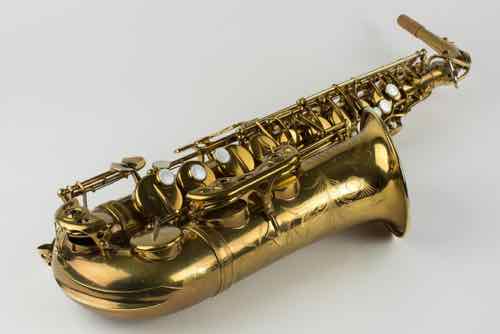
Selmer Mark VI Alto
Selmer Mid Range $1800 – $3000
There are several Selmer Super Action saxophones from the La Voix II series that are around the $2000 to $3000 range. These are also professionally made horns and include these models:
- SAS280
- STS280
- SSS280R
*Note – the 2nd letter in the model number tells you which type of sax it is; SA means it’s an alto, ST means tenor, SS means soprano etc.
Another quality model is the Selmer Mark VII. This was the one that they put into production following the mark VI in the mid 1970’s.
When I was looking at buying a saxophone for the second time I had the chance to get a brand new one from the Selmer factory in Paris. This turned out to be a Mark VII. This was before I got my Mark VI. They’re not as popular but I can tell you they sound as good, if not better than the Mark VI.
I’ve had big name recording producers prefer it to the Mark VI. The reason it’s not as popular and sought after as much as it’s predecessor is in the way it feels, particularly with the low note cluster in the left hand. This group of notes which includes the low C#, B, and B flat is physically larger than that of the Mark VI model and so can be a little cumbersome especially if the player has smaller hands.
I did a comparison video between the Mark VI and Mark VII
The good news is that you can still get a Selmer even if the mid range price point is high for you! They have the student model saxophones covered as well. Why not, it’s a big market. You first notice the look of the silver rods instead of the gold rods on a higher priced sax. Pretty much everything else will be a lower quality material such as tone keys and overall instrument material composition. But these models are still high quality made instruments.
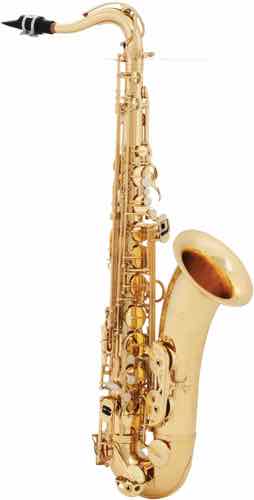
Conn-Selmer Prelude TS711
The 500 series come in at around $2500. Look for models numbers such as TS500 (tenor) and TS500 Aristocrat, AS500 (alto) and AS500 Aristocrat. The 500 model being made in Taiwan and the Aristocrat in the USA.
These are a high end student model.
Selmer Low Price Range $1300 and less
- AS300
- TS300
- Aristocrat
- Prelude
The 600 Aristocrat series comes in at the top end of this lower end range at around $1300 for a brand new one. These are also made with the student in mind and are similar to the 500 series mentioned above but are priced a lower. Of course these can be found for well under $1000 in the used market.
Next is the Prelude model which is also know as the AS711 for alto and the TS711 for tenor.This is the mid-range student model and is priced slightly lower than the Aristocrat series.
The Prelude comes from the Conn-Selmer company which is American-made. Also from Conn-Selmer is the La Voix Series mentioned above. This company was a joint venture between Conn and Selmer which today is the largest producer of band instruments in America. Any sax made by Conn-Selmer would be a good choice.
To hear my Selmer Mark VI just check out any of the song videos from my saxophone music here. There’s only a few that I played alto on and maybe a couple on soprano but every other song is on the Mark VI.

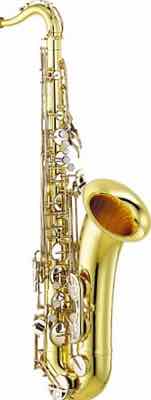
YTS-23 Tenor Sax
Yamaha Medium and Lower Priced Models $500 – $2800
Another manufacturer of very fine quality instruments is Yamaha. We saw their first models roll out as early as 1967. These very first ones were the student models YAS-31 and 61 (Yamaha Alto Saxophone) and the YTS-31 and 61 (Yamaha Tenor Saxophone).
23 series
The 31 and 61 were the predecessors to the now very popular YAS-23 and YTS-23. Also worth noting is the Vito-21 model which was being made by Yamaha and eventually became the 23 model. So, if you run into a Vito alto or tenor that has a “Made in Japan” stamp you can be assured it’s a well made horn.
The YAS/YTS-23 is a very good horn and is one of the best saxophones for beginners of all ages.
475 series
The 475 series fits into their “intermediate” category. It has the potential (depending on the player) to sound richer and fuller than the 23 series. I would seriously consider the 475 series as a first sax, or if the 23 is your first sax then just by-pass the 475 because it is priced just slightly lower than Yamaha’s entry-level pro horn the 62.
62 series
As I just stated, the 62 is Yamaha’s entry-level professional horn. The alto saxophone price for the YAS62 is around $2,500 new and $1,800 used. The tenor (YTS) is slightly more. About $2,800 new and $2,000 used. These sound a bit thinner than the Selmer pro models but they play very nice!
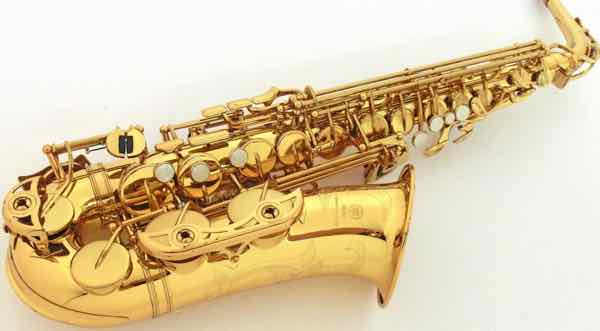
YAS-62 Alto Sax
I can tell you from personal experience that this sax is one of the best feeling saxophones I’ve ever played. Smooth, even playing, well-built and good over-all tone. Not quite up there with my Selmer Mark VI or VII but neither is the price!

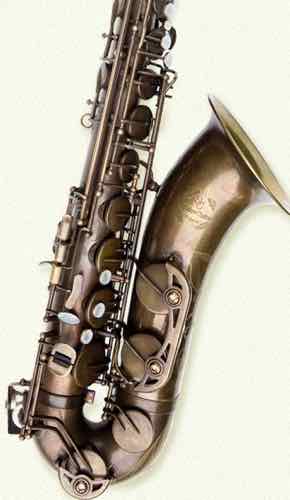
Trevor James RAW Tenor
Trevor James is one of the newer saxophone manufacturers but has been around for several years already. They have slowly become one of the best around as their reputation continues to grow because of their excellent horns. I don’t own one myself (yet) but have played on several models, the RAW being my favorite.
The Trevor James pro model line-up looks like this:
- RAW
- RAW XS
- RAW Vintage
Signature Custom
- silver plated
- old Lacquer
- phosphor bronze
The RAW line of the Trevor James saxophones focuses on an authentic vintage type of tone along with a matching aged look on the finish of the entire horn.
The raw finish is authentic and not just a color finish like some other manufacturers use. The RAW XS undergoes and additional hand buffing which gives it a cool old vintage look.
The Signature Custom models also come with silver plating, gold lacquer, or phosphor bronze finish. The silver plated one has a highly polished bore a heavy vintage type silver plating and not thin like other brands so these tend to sound a little brighter in tone compared to the other models.
Prices are around $4000 which is around the bottom end of the Selmer prices. Not bad for a horn that stands up well against the high priced Selmers.
Trevor James Student Models
- SR
- AlphaSax
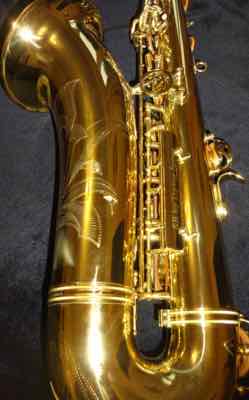 The Trevor James SR is one of their student models. As you can see by the image to the left they don’t look like a typical student instrument, but more like a professional model.
The Trevor James SR is one of their student models. As you can see by the image to the left they don’t look like a typical student instrument, but more like a professional model.
There are differences in the mechanism, key work and finishing but the high quality and tone are there.
The SR comes in at under $2000 new. You probably won’t find as many in the used market as most of the other brands because they’re a newer company.
Also, Trevor James is located in the UK and have just recently started their distribution efforts over to North America. We will be seeing and hearing more about them.
The other student model is the AlphaSax. These can be had used for around $700-$900. New they cost a little less than the SR and so is the lower end model.
I haven’t played the Alpasax but have tried the SR and it’s the nicest “student” model sax I’ve ever played on.
Playing a Trevor James Alto “RAW” Model Saxophone
The song videos I’ve done since receiving this Trevor James alto sax are:
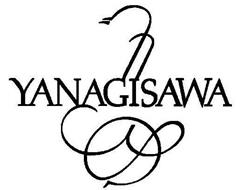
Yanagisawa is very well established and have the reputation of a high quality built line of saxophones. I remember when they came around and people started talking about them. For me it was in the late 1970’s. Their first horn goes back to 1954 when they produced the T-3 which was their first tenor model. This was followed a little later with their alto the A-3.
All their models were high quality pro level horns with no designated “student” horns. Priced very well and very high quality manufacturing from an old and reputable Japanese company. Today they are distributed in America by Conn-Selmer.
I tried one out at my favorite music shop but it didn’t blow me away because I already had a Selmer. So for me these weren’t as good as the Selmers but there are many pro’s who swear by them and some of my sax player buddies at the time were buying them.
The Yanagisawa models to look for are:
- 3 series
- 6 series
- 500 series
- 800 series
- 900 series
- WO series
The 3 series was their first products from the 50’s and 60’s. You can still find these in the used saxophone market for under $1000. Look for T-3 and A-3 (tenor and alto).
The 6 series were made through the 1970’s. These were a kind of a copy of the Selmer Mark VI. Of course they didn’t have the sound of one but they were priced a lot lower and so they became popular. These tend to be a little hard to find these days. If you’re lucky enough to find one you’ll likely get a nice quality horn for a good price.
The 500 series came in around this period of the late 70’s and were a lot like the 800 series but slightly cheaper. Described as between beginner to intermediate whereas the 800’s were pro. New the 500’s sold for just under $3000 so that’s not really a “student saxophone” price. If you can find one of these used at a good price you won’t go wrong!
The 800 series were introduced in the late 70’s and were basically a clone of the Selmer Mark VI. This just happened to be when the production of the Mark VI ended and the Mark VII was already being produced. Used these can go anywhere from $1500 – $3000, depending on the specific model.
The 900 series has been, for a long time some of their most popular and sought after models. These were produced during the 1990’s and were their top of the line pro horns until the WO series started replacing them. Saxophonist Plas Johnson who was the guy on Henri Mancini’s Pink Panther classic recording plays (or at least played) one of these. The 900 series can be found from around $2000 and up on the used market, depending on the condition and specific model.
The WO series began replacing some of the 900 models a few years ago. This series is their most recent and most expensive line of saxophones. The price of a new one can be in the $9,000 to $10,000 price range. Certain used models can be found for a few thousand dollars though.
I don’t recommend Yanagisawa’s over the few brands I mentioned earlier but if you’re lucky enough to live close to a store that carries them they are certainly worth checking out. Even though their tone might lack compared to some other top brands their quality in manufacturing and materials is second to none.
Of course this is only my personal opinion. You might play one side-by-side with a Selmer and prefer it…..you never know till you try it!
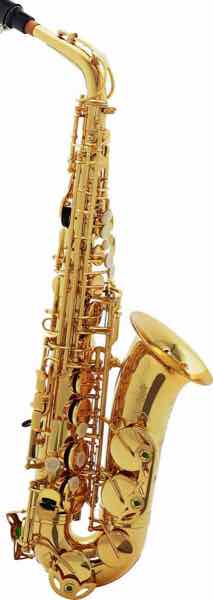
keilwerth ST90 Alto

Disclaimer – I have never tried a Keilwerth saxophone.
Julius Keilwerth began his company in Germany during the 1920’s. Since the late 80’s they have produced some very beautiful saxophones that are competing with the other top models on the market even today. Some notable players who use them are Ernie Watts, James Moody, David Leibman and of course the great late Grover Washington Jr.
Professional Models
The top pro model of choice is their SX90R model. These can be seen on eBay in the 4-6K range and a new tenor for about $7,000.
*Note – their EX models are all now discontinued.
Student Models
If you find an ST90 (or similar) model you might want to check it out. These are their student horn. Not made in Germany but in Taiwan. Still, a good instrument that can compare with similar priced Selmer and Yamaha saxes. These can be found in the used market for under $1000.
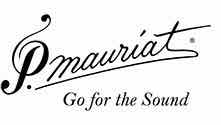
Disclaimer – I have never tried a P Mauriat, at least don’t remember doing so! Either way I can’t say how they feel.
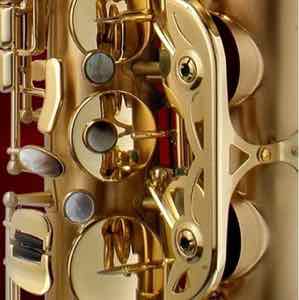
P Mauriat Le Bravo 200
Some players prefer these to any other sax out there. There are others who like them a lot but not as much as a Selmer Mark VI. Either way, after talking to players and saxophone repair people I know these are a very good and well built saxophone. The company boasts that they’re 100% hand made.
In the overcrowded new saxophone market, these are still one of the top standouts so that says a lot. They’re known for the classic jazz sound of yesteryear but with modern feel and technology giving improved action and material composition.
Price range being even below the comparative Keilwerth and Yanagisawa pro models
Pro Models
Look for models such as the:
- P.Mauriat PMXA-67R and 66R
- System 76 (made in Taiwan)
Student Models
P. Mauriat Le Bravo 200 – these new are priced around $2000.
 King Models:
King Models:
- Cleveland
- Super 20
- Zephyr
The first sax I ever bought was a King Cleveland. That’s a student model which are still kicking around today. I paid $200 for it in the mid 1970’s and sold it for about the same. If you find one around you might be looking at around $300 for it I suppose.
The Super 20 is a pro model and can go for several thousand dollars depending on the year and condition. Some models also had the famous silver bell. This made it sound brighter.
The King Zephyr was the predecessor to the Super 20. Today you can find them for around $1000.
King saxophones are considered one of the “vintage” brands of saxes. When you play a vintage sax from the earlier part of the 20th century and compare it to one of the newer ones from after the middle part of the century and earlier, you will notice the feel is very different. The action, the materials such as key pads feel quite different.
Newer models have a much quicker response and tighter all-round feel. As with anything else, this is all due to the progress in the technology of the industry. Still, some players like the sound (and feel) of these older vintage horns. Personally I prefer the feel of the newer saxophones.
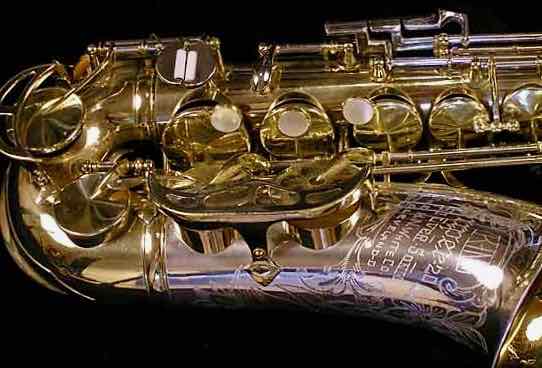
Vintage King Super 20
Other Good Choices For Student Saxophones
- Conn M series
- Buescher
- Bundy
- Vito
Saxophone Brands To Avoid
Generally speaking, stay away from Chinese made saxophones. I say generally because there are a few that are good because they were produced for a specific company from outside of China. North American has been flooded with really cheap saxophones made by the Chinese.
I had 2 alto’s brought back from Beijing through a pilot friend of mine who was flying there on a regular basis. One of the horns he brought back looked like a Selmer, even had the logo on it. Wow I thought, and only $200! The other one had a different unknown name and cost $150.
The one with the Selmer logo didn’t even play. I took it to my sax repair shop and they wouldn’t even touch it saying they would most likely break a part and then not be able to get another one. Their advice? Get rid of it! I was able to play the other one but barely, and the intonation was almost impossible. So, if you find a China-made sax out there for under $200 just stay away. Bump your budget up even a couple hundreds dollars more and get one of the reliable names/brands mentioned above.
The few exceptions which are good saxophones made in China that I know about are:
- RSR – personally have not tried one but some people say it’s a decent horn and under $500
- Bauhaus – from a British company that has them made in China
- Jericho – made by one of the newer companies
By the way things are going, I think we’ll see more quality instruments come out of China. They want quality saxes too and they have the people and resources to get it done and now it looks like a few are floating to the top. This is a good thing. It takes a lot of time and effort to sort through the good stuff and the garbage and so I simply cannot shed anymore light into this at the moment.
Testing A Saxophone
If you already know hot to play a sax then you’ll have no problem testing out your soon-to-be next saxophone. Buy what if you haven’t played one yet and are literally just starting out? In this case you could bring a saxophone player along with you if possible. Viewing (and playing) several on the same day would be the best way to go about it. Don’t forget to bring along a couple extra reeds and your favorite mouthpieces!
If you aren’t a player yet, and don’t know someone who is that can try them out for you, don’t worry, you can still go saxophone shopping
Have a close look for dents, bent rods and anything else that may look out of place. If you do find some weird things like that it’s still ok to make an offer. Like I said before, all these things can be fixed by a repair shop. You can however negotiate a lower price with the seller. Since these repairs are going to cost money, you can at least pay a much lower price for the horn. You and the seller can also go to the repair shop and get an estimate for any repairs and take this into consideration when settling on a price.
Ge the seller to demonstrate it for you. There is a good chance the person selling it is the one who was using it so they should be able to play it for you. At least you can see that it’s working…..or not. You can also ask the seller to bring it into a repair shop and have it checked out.
Where to Buy a Saxophone
Best to locate some local sales so you can try them out. If not then you can spend days online with so many classifieds and shops with everything from new to vintage.
There are so many online sites and stores that you can spend days looking.
Don’t overlook Amazon’s used saxophones because I’ll often see some very well-known models there. Even a few I mentioned above like the Yamaha models.
Good Luck!



Wish i had read this article years ago.
When i bought my sax, i researched it before buying, my requirements at the time where cheap price, sound brand name, good resale value, reliable working sax – how it sounded and felt playing wise didn’t come into the equation. I went for an intermediate alto yamaha sax, like you said, i didn’t but a pro model in case sax playing wasn’t for me.
Buy the best you can afford, my next sax if do buy another would be a new selmer, i think everyone has a nagging doubt about what it would be like to play on one, and at some stage would try one out.
For the time being i’ll stick with my intermediate sax.
Johnny: Great article. You and Mike bishop are the only ones on the site that have heard me play. So, that said, I bought a Yamaha 62-2 when I started. The rental that I had had problems. I knew I wanted to do this, so I got a pro model. Got it at good price. I was looking over the net and, loe and behold, I found a M6 for a good price. Bought it! Amazing sound. I know many will now say no big deal. Their opinion. I have always bought good stuff. Don’t like getting burned by low price equipment that does not last. I have been recording with this laptop and sending the records to Johnny. He is kind enough to comment. So far so good. I have not built a recording studio like some of you have. I’m old, 75 on the 23’rd of JAN. Where has it gone? I do the 30 min practice plus other exercises. Intervals, phrases for tunes to attempt to memorize. Memory of stuff has always been a problem for me. Oh well, keep on going! Never quit if you want to improve. Practice as much as you can. Set a firm schedule and try to stick to it !!! Again, you can’t go wrong with top quality equipment. Tim
currently looking into upgrading my sax from an intermediate student sax to an entry level pro model but i have to keep the price down (you could buy a lot of shoes and hand bags instead). i see the upgrade as a luxury more than a necessity, so i‘m not overly set on the idea, unless there is a huge benefit to be gained.
£2191 gets me a selmar
http://www.sax.co.uk/selmer-paris-seles-axos-alto-saxophone.ir
£1975 gets me a yamaha
http://www.sax.co.uk/yamaha-yas62-04-alto-saxophone-gold-lacquer.ir
£2295 gets me a yanagisawa
http://www.sax.co.uk/yanagisawa-awo1-alto-saxophone-gold-lacquer.ir
I’ve read a lot of online reviews, seems for the price range the yanagisawa comes out on top in sound, yet most people are happy with either three models.
i guess i’ll just have to go in the shop and try out all three with my mouthpiece. hopefully I might just find i still prefer my own sax?
Any comments from people who own these models would be useful.
they’re all good. lucky for you if you can try all out in person…go for it!
Had a chat with my sax teacher today, who has played all the three saxophones i mentined, and has students who play on all three saxophones.
1) the yamaha’s are very bright sounding instruments
2) the yani’s are very dark sounding instruments
3) the selmar has slight tuning issues
i have heard a student play on a trevor james model, personally i didn’t like what i heard, the tuning sounded like a beginner on a violin (that would drive me up the wall), i asked my
instructor about it .. and he said, you can change that sound with a different mouthpiece.
What my teacher said was .. if i was to spend my on buying a brand new sax from any of the three above models, i would be better off, buying a second hand Pro sax, with the same cash.
Back to square one, those three are out of the window. lifes a b….
Great article and nice summary of so many different bands of horns! I play a Buffet Crampon SuperDynaction Tenor and was curious your thoughts on them. Personally I love it but I think I am likely biased and very attached to it!
that’s great. of course I’ve heard of them from many many years ago but never had the opportunity to try one. I know they’re famous for the fine clarinets they make.
The working Pro that teaches me often plays on a Selmar 7 in my lessons, and compared to my Yamaha, his Selmar sounds more bluesy. He has to play with a classical mouthpiece as most of the students are doing classical exams.
I play with a bright mouthpiece (guardala king), so i asked him to try my mouthpiece on his Selmar – i was blown away, the sound was hundred times better than my yamaha – if you ever listen to the Beatles, his sound was on the same level.
I asked him why he doesn’t use a mouthpiece like mine as the sound was completely different to his mouthpiece – again it boils down to him having to work with classical students.
So anyone thinking of buying a Selmar, and actually trying it out, take a bunch of mouthpieces – you’re in for shock, when you swap between bright and dark mouthpieces.
In Fact, if you tried out a Selmar in the past, and wasn’t impressed with the one you tried out, chances are you missed out on a great sax that may have sounded better with a different mouthpiece.
Bonjour
je m’appelle Patrice et vos leçons sur le s overtones sont super ainsi que vos scores
vous ne parlez pas des selmers seriesIII
avez vous un avis?
amities Patrice
hey Patrice I don’t think I fully understood your question but if you are asking about the Selmers, yes I totally recomend them….I personally have a Mark 6 and 7.
Hello John,
Patrice wrote that you have nothing written about Series III of Selmer. Selmer started to produce them around the year 2000 and production ist still ongoing. Since February 2021 Selmer started to sell the new Selmer Supreme Alto which is now the top model of their Alto’s. Selmer built all the good features of the previous Models into this new Instrument. If you get the possibility to test one of this new Instruments, you should do so. They are marvellous.
yes agreed…the trick is to find one to try it!